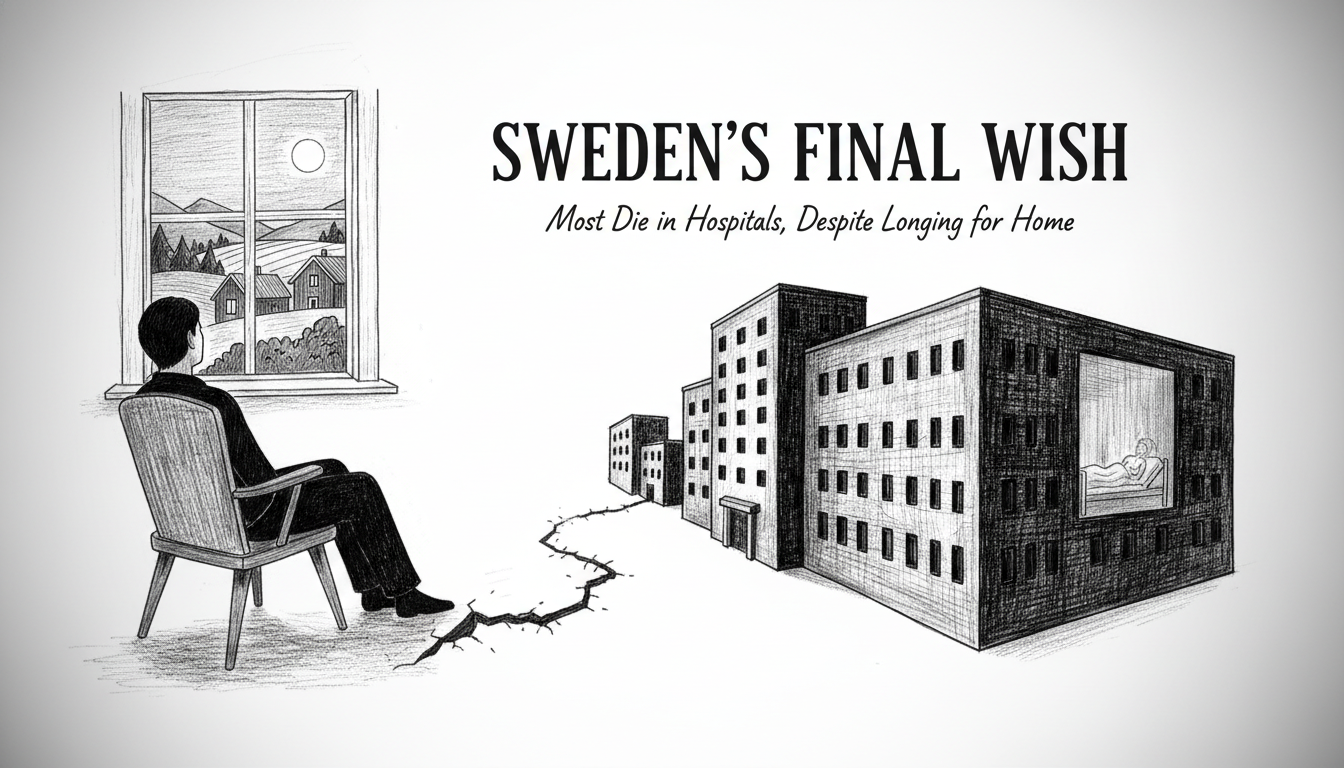Most Swedish citizens want to pass away at home in familiar surroundings. Only one in five people actually gets this opportunity. Hospitals and nursing homes instead dominate end-of-life care. The system shows clear inequalities and lacks proper coordination.
This gap between preference and reality reveals deeper issues in Swedish healthcare. People express strong desires for comfortable home environments during their final days. The current system often cannot accommodate these wishes. Medical facilities remain the primary location for death despite public sentiment.
Sweden's healthcare system faces practical challenges in providing home-based end-of-life care. Limited resources and staffing shortages affect service delivery. Rural areas experience particular difficulties accessing palliative care services. Urban centers struggle with different but equally serious constraints.
The situation reflects broader Nordic healthcare trends. Similar patterns appear in Norway and Denmark though with local variations. All three countries pride themselves on comprehensive social welfare systems. End-of-life care represents an area where practice falls short of ideals.
International readers should understand Sweden's universal healthcare model. The system provides coverage for all legal residents. Regional councils manage healthcare delivery across the country. This decentralized approach creates service variations between different areas.
Elderly Swedes face particular challenges in accessing preferred care options. Aging population trends increase pressure on existing services. Family members often provide substantial unpaid care work. Professional home care services reach limited numbers of people.
Recent policy discussions focus on improving end-of-life choices. Politicians debate increased funding for home-based palliative care. Healthcare professionals advocate for better coordination between services. Patient organizations emphasize the importance of personal autonomy.
The disparity between wishes and reality has emotional consequences. Families experience additional stress when loved ones cannot die where they choose. Healthcare workers face moral dilemmas about resource allocation. Society confronts difficult questions about dignity and choice.
What solutions might address this situation? Increased investment in community-based care could help. Better training for healthcare professionals in palliative care matters. More flexible systems that respond to individual preferences.
Sweden's experience offers lessons for other countries developing end-of-life care policies. The gap between public preference and actual practice appears common across many healthcare systems. Sweden's transparent reporting on this issue provides valuable data for international comparison.
The conversation about death and dying continues evolving in Swedish society. People become more vocal about their preferences for final care. Healthcare systems slowly adapt to changing public expectations. The journey toward better end-of-life care continues with both challenges and progress.

